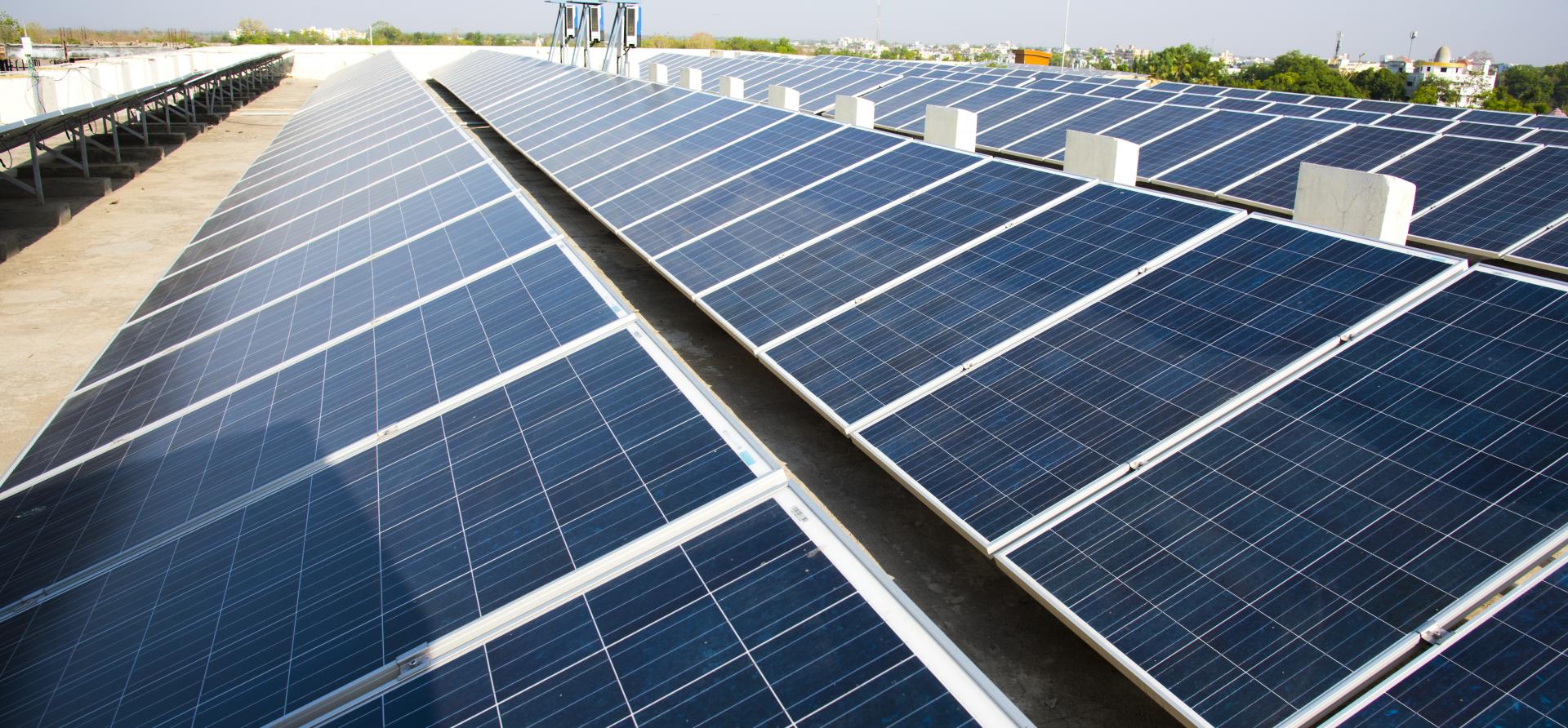Emerging technology trends in the C&I rooftop solar market in India
Download Full Report

Key Findings
The C&I segment is India's largest rooftop solar market and is expected to add 1,875MW of new capacity in 2021.
Onsite solar projects offer opportunities to optimise electricity costs and increase procurement of renewable power.
Prices for solar modules and batteries have fallen and are expected to fall further, a boon for price-sensitive C&I customers.
Executive Summary
India’s experience with the rise in rooftop solar or onsite solar has been led by the Commercial and Industrial (C&I) segment. This segment comprises about three-quarters of the Indian rooftop solar market. Although the COVID pandemic created major disruptions and slowed the installation rate in 2020, the C&I segment is expected to bounce back and increase the pace of deployment of solar installations. This is because amidst the pandemic-induced challenges, it has become more of a necessity for the C&I sector to optimise costs. This can be achieved by adopting various new innovative technological rooftop solar solutions. In addition, rooftop solar can help corporates fulfil their RE100 (100% renewable energy) or other corporate social responsibility goals.
The C&I segment accounted for about 75% of the rooftop solar market in 2020.
In the past few years, the market has witnessed a steady pace of capacity additions (hovering at about 1.5 gigawatts (GW) per annum) from this premium consumer group. As of 2020, the market size of rooftop solar was 7,920 megawatts (MW), with the C&I segment accounting for >75% of the market. Rooftop solar capacity addition in the C&I segment in calendar year (CY) 2021 is estimated to grow by 47% on a year-over-year (Y-o-Y) basis to add 1,875MW of new capacity.
Some solutions offer considerable value-addition in terms of energy generation while others are viable only in specific scenarios, though the latter kind have high prospects in the market. Key new trends being explored in the Indian market include adoption of large format modules (400+/500+Wp series), bifacial modules depending on site-specific conditions, and battery storage for specific applications by C&I clients. With falling module and battery prices, switching to a rooftop solar or rooftop solar+storage model can help them save significantly on electricity costs. Technology prices in India are expected to fall further on account of various new government incentives, such as the Production Linked Incentive (PLI), and new expansionary initiatives1 being planned by domestic manufacturers.
An increase in perceived interest and overall solar market demand for lower cost and higher wattage modules, with their inherent improved technical features, is promoting adoption of larger-sized wafer-based modules. When higher-wattage modules are used for onsite solar installations in India, plant generation increases by 1% while Balance of System (BOS) costs reduce by 1%. These benefits are more profound for sites with space constraints.
Additionally, there is a growing need to optimise costs and maximise output (kWh/m2) in a given project area, especially in the C&I segment (given the limited rooftop/onsite space). Bifacial modules allow players to achieve that at a negligible additional cost. With bifacial modules, power can be produced from both sides of a panel, increasing total energy generation viz-a-viz a monofacial module-equipped project, thus reducing the levelised cost of energy (LCOE). The project case studies in this report highlight the increase in generation owing to bifacial modules of about 4-5% compared with polycrystalline modules.
Solar+battery storage rooftop projects are also likely to pick up pace in the near future. In a time span of about two years (by 2023), battery prices are estimated to fall to US$100/kWh, which would shift the market forward for integrated rooftop solar and battery storage systems from the present cusp phase. Specifically, there is a huge opportunity for rooftop solar+Battery Energy Storage System (BESS) to replace diesel gensets, which represents 90GW of aggregate capacity in behind-themeter (BTM) applications in India.
Apart from the above mentioned trends, another nascent onsite technological model that is likely to be explored by many developers in India is rooftop solar integrated with electric vehicle (EV) charging stations. This solution can potentially provide greater self-sufficiency for C&I consumers and also address the issue of EVs being fuelled by electricity generated from greenhouse gas (GHG) emitting-fossil fuels. For this reason, solar carports are already becoming a popular choice among many C&I customers. Solar carports are not only a cost saving option, they can also act as a great lever for companies to advance their sustainability performance. Captive charging is permitted in accordance with the Ministry of Power’s Charging Infrastructure for Electric Vehicles - Guidelines and Standards. 2 Further, many states such as Andhra Pradesh, Bihar, Delhi, Tamil Nadu etc., through their state EV policies, promote the interlinking of a captive renewable energy system and EV charging infrastructure.
Additionally, the adoption of Building Integrated Photovoltaics (BIPV) also presents an attractive long term opportunity for corporates that are planning to set up new commercial buildings and offices in India. The outlook for this market is highly positive given the potential co-benefits it offers (i.e. providing architectural features and generating green power) and also considering that more than 50%3 of the buildings likely to stand in India by 2030 are yet to be built. However, specific standards for BIPV are required that combine techno-electrical requirements and building codes to help streamline the process of installation.
This report also provides case studies of active, on-the-ground projects, illustrating actual benefits earned and the challenges that were encountered using some of these aforementioned emerging technological solutions.-


















